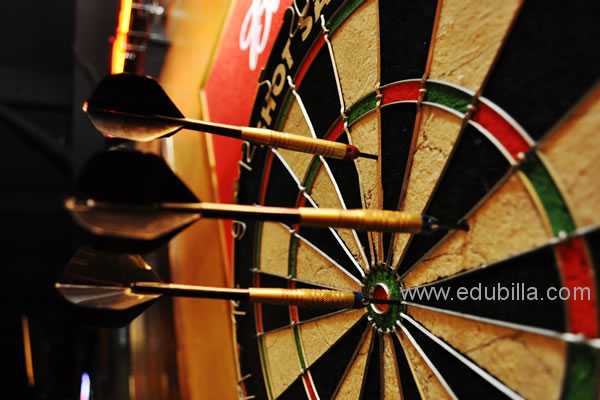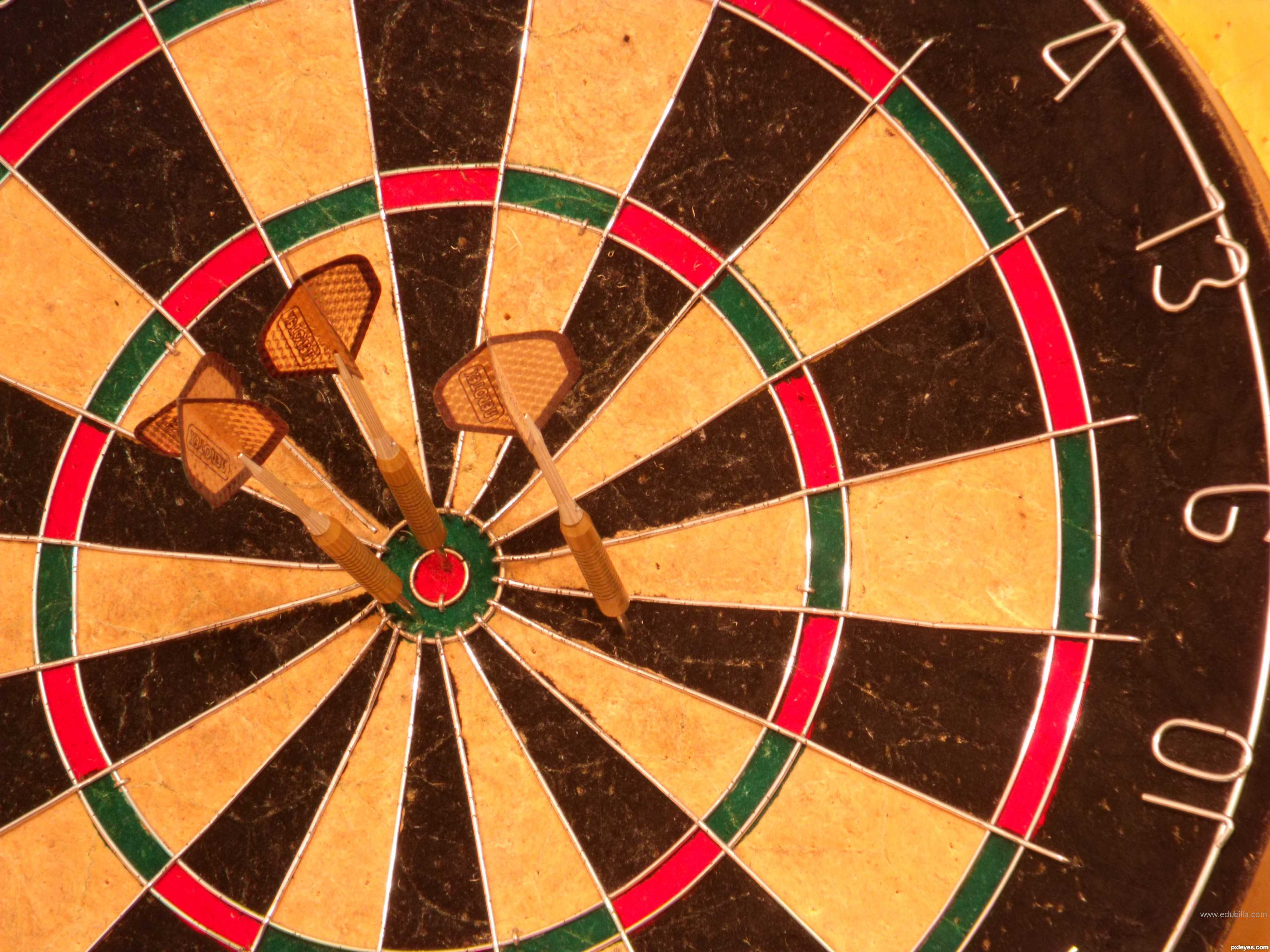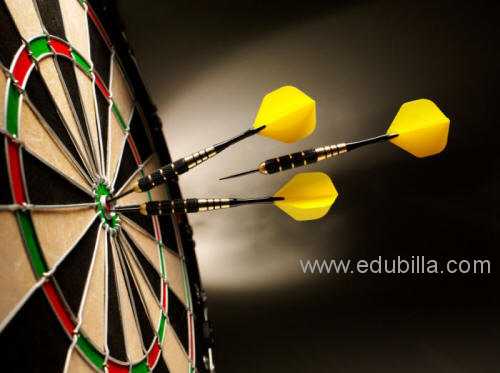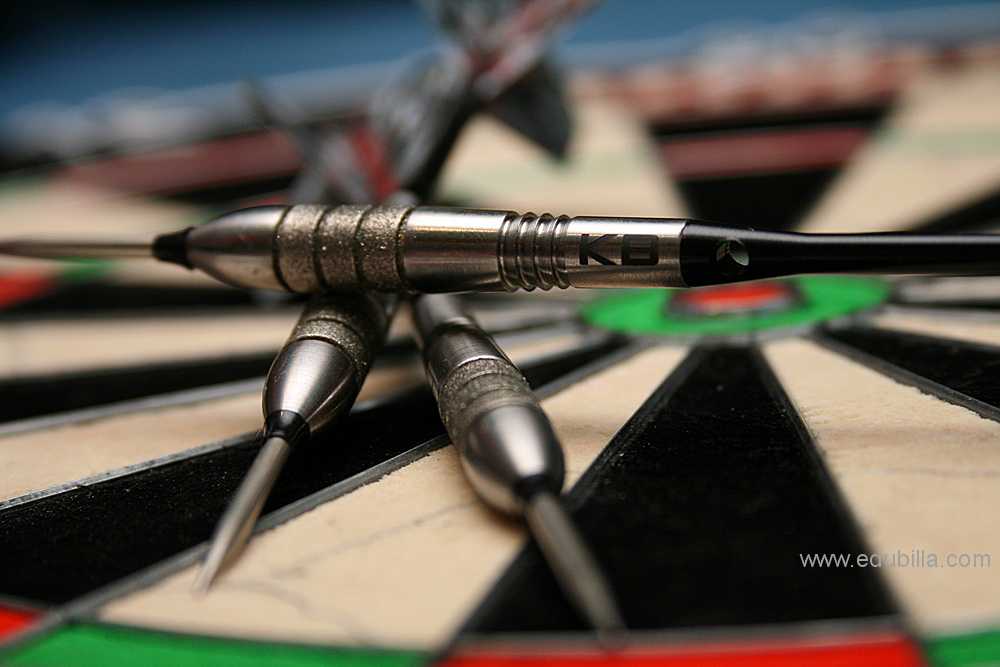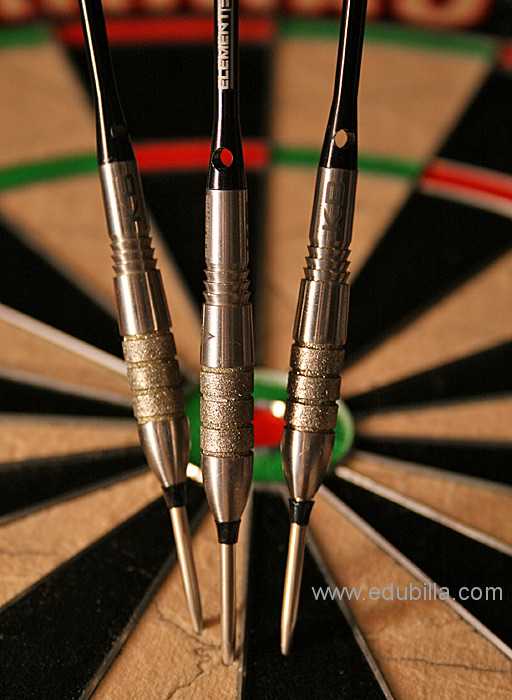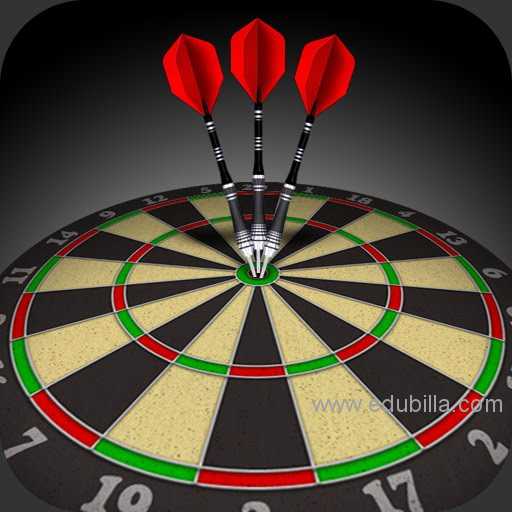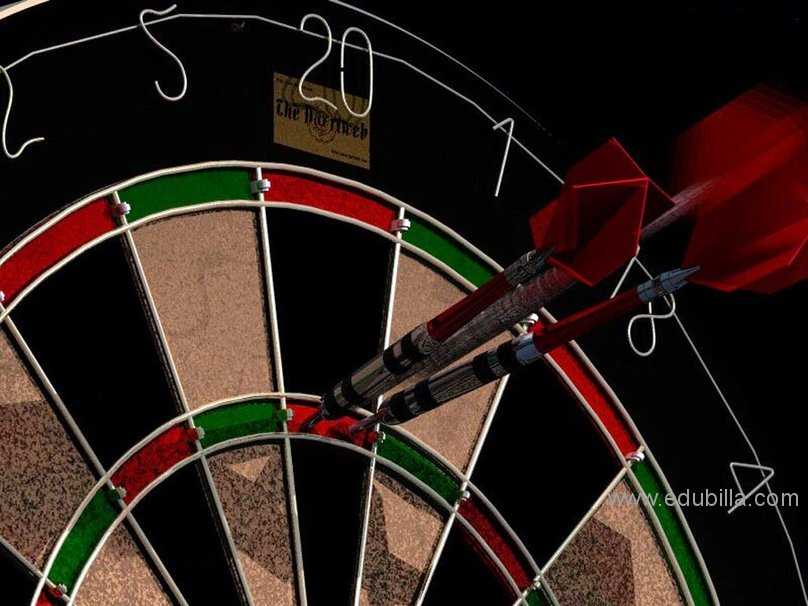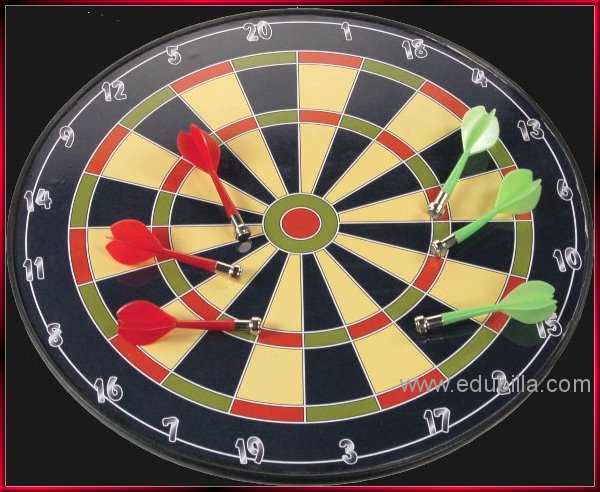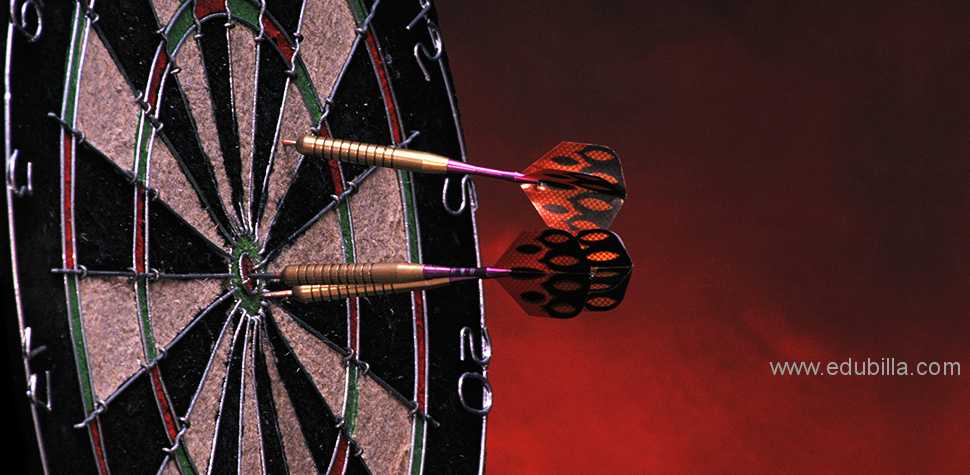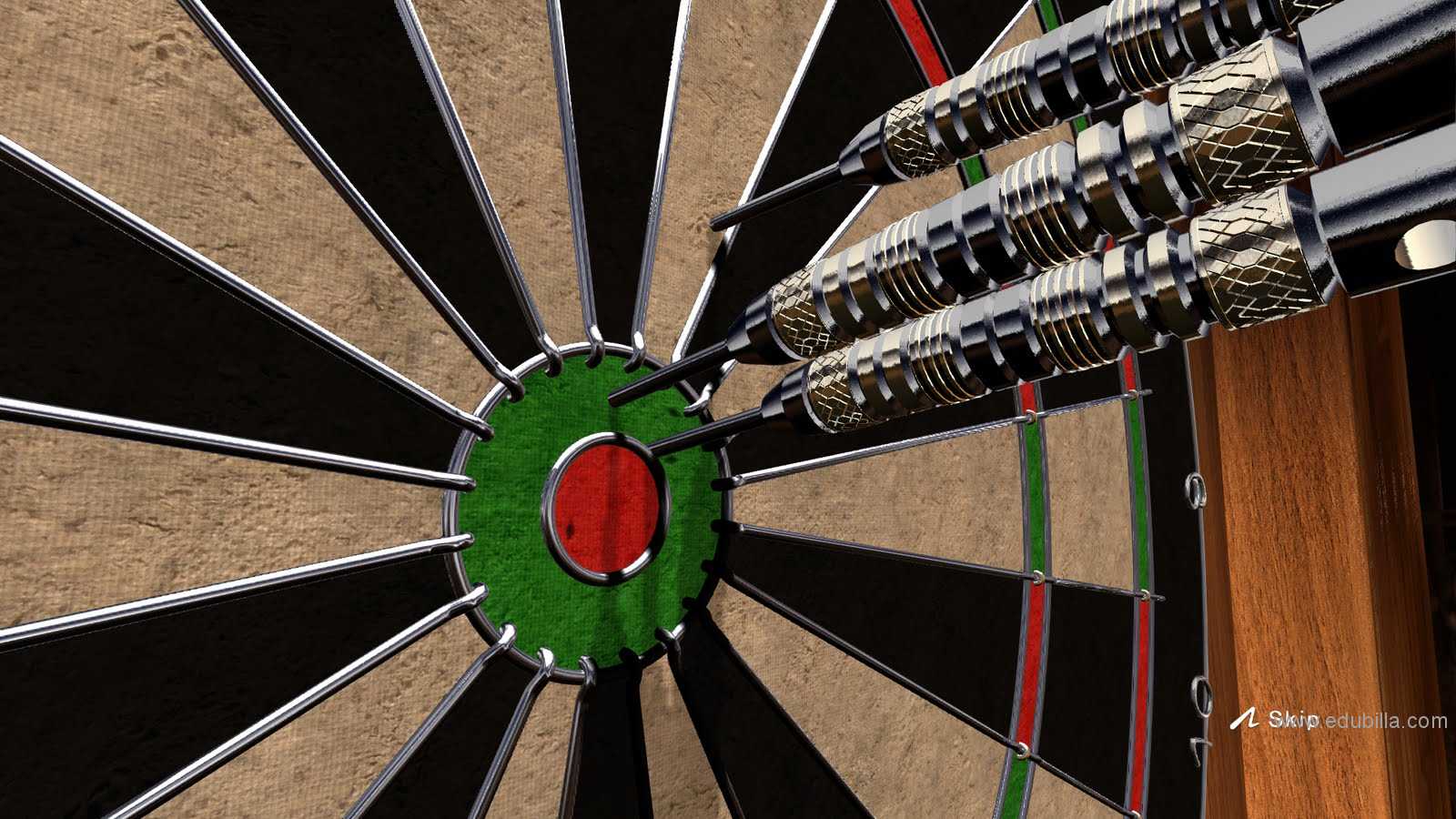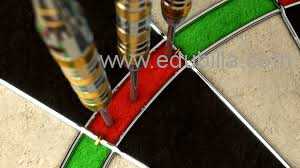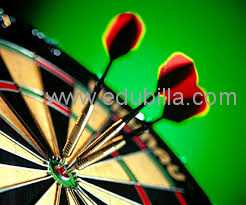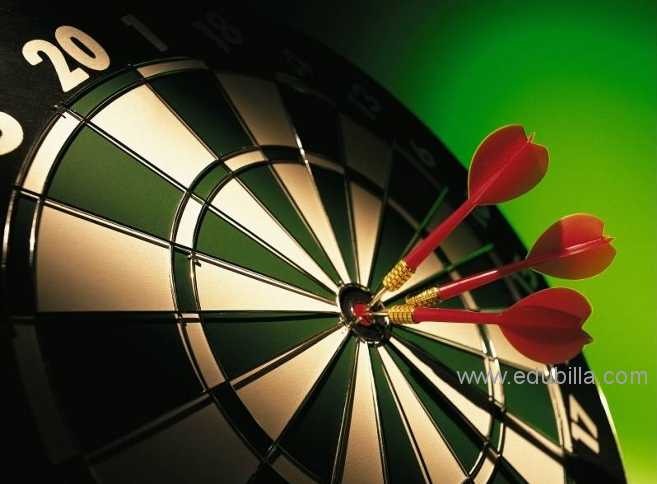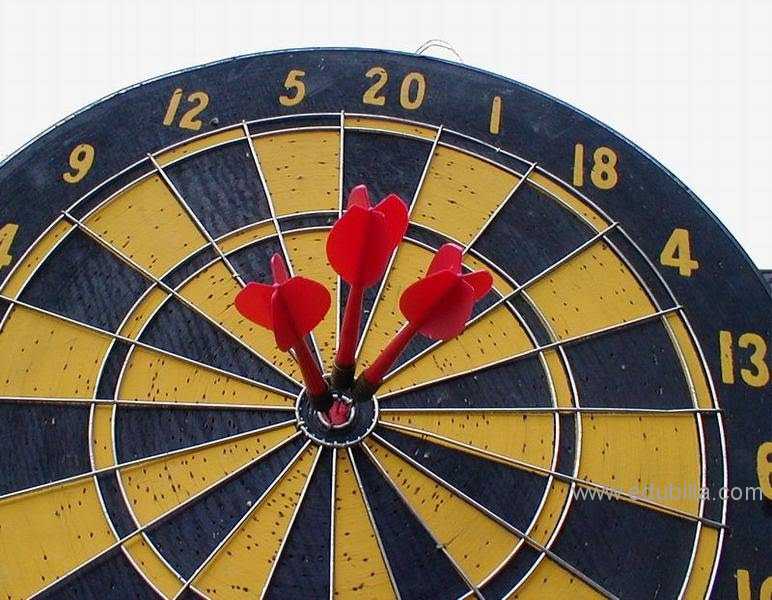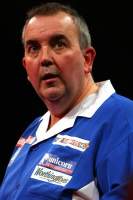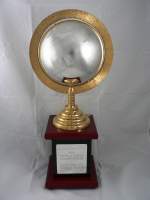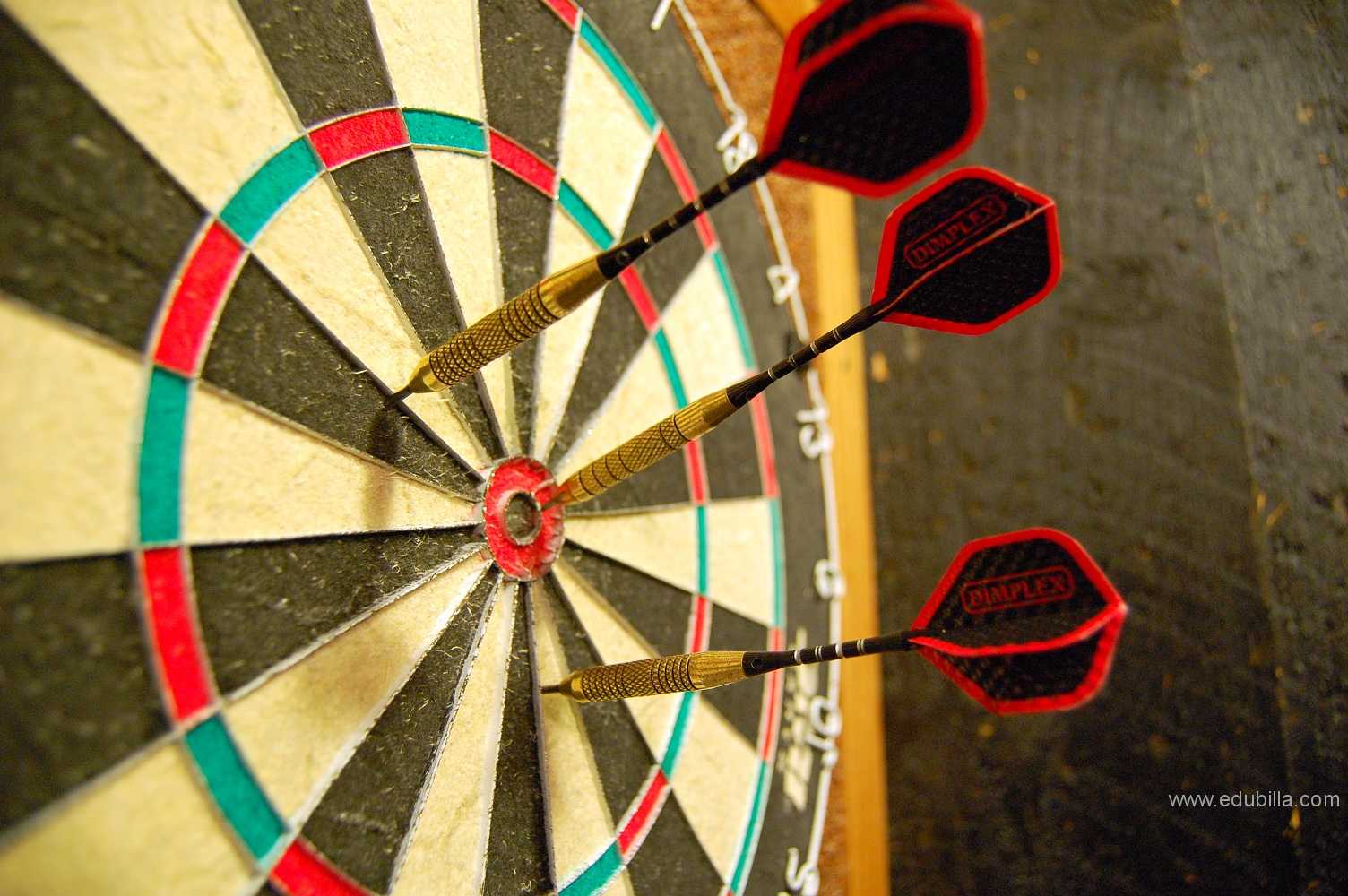
Overview Of Darts
Darts is a form of throwing game in which small missiles are thrown at a circular target (dartboard) fixed to a wall.Though various boards and rules have been used in the past, the term "darts" usually now refers to a standardised game involving a specific board design and set of rules. As well as being a professional competitive sport, darts is a traditional pub game, commonly played in the United Kingdom, across the Commonwealth, the Netherlands, Belgium, Republic of Ireland, the Scandinavian countries, the United States, and elsewhere.
Barrels come in 3 basic shapes: Cylindrical, torpedo, or ton.Cylindrical barrels are the same diameter along their entire length and so tend to be long and thin. Their slenderness makes them better for grouping but because they are long, the centre of gravity is further back. Ton shaped barrels are thin at either end but bulge in the middle. This makes them fatter than a cylindrical barrel of equivalent weight but the centre of gravity is further forward and so theoretically easier to throw. Torpedo shaped barrels are widest at the point end and taper towards the rear. This keeps the weight as far forward as possible but like the ton, gives it a larger diameter than the cylinder.
Game Rules
Dart Board Measurements:
Standard height from the floor to the bullseye on the dartboard is 5 feet 8 inches, while the oche (distance between the front of the board and the toeline) should measure 7 feet 9.25inches.
Throw:
A player shall throw darts from a standing position, excepting only in those circumstances when a physical disability, or physical injury requires a player to adopt a non-standing position.
All darts must be deliberately thrown, one at a time, by, and from, the player’s hand. All darts must be thrown with the needlepoint aimed towards the face of the dartboard. If a dart is not thrown in this manner then the ‘throw’ will be declared a ‘foul throw’ and will not count in that respective leg, set, or match.
A throw must consist of a maximum of ‘three darts’, unless a leg, set, or match is completed in less than ‘three darts’
Starting and Finishing:
In all darts events each leg shall be played with a straight start, and the finish must be on a ‘double’, unless stated otherwise in the playing format of a particular event.
The ‘Bull’ shall count as ‘50’, and if ‘50’ is required to complete a leg, set, or match, then the ‘Bull’ shall count as ‘Double 25’.
The ‘Bust’ rule shall apply, IE: if a player scores more than the number required then that score shall not count, and the player’s score shall revert back to the score the player required prior to the opponent’s last
throw.
A ‘Game Shot’ called by a referee is valid, only if the darts thrown achieve the required finish, and remain in the dartboard until retrieved by the player at the time that ‘Game Shot’ is called.
If a ‘Game Shot’ called by a referee is declared invalid, then the player shall have the right to continue the throw, which is in progress, in an attempt to achieve the required finish.
Scoring:
Match targets shall be 501, 601, 701, 1001 or similar. A target must be reduced to zero by scoring all the points in the respective target.The actual score required by a player, shall be shown on the score sheet, or visual display unit, which must be clearly visible in front of the participating players and the referee.
A dart shall only score if the point remains in, or touches the face of the dartboard, within the outer double wire, and having been ‘called’, shall be retrieved from the dartboard by the player. The score is counted from the side of the segment wire in which the point of the dart enters and remains in, or touching, the face of the dartboard.
Darts shall be retrieved from the dartboard by the thrower but only after the score has been ‘called’ by the referee, and recorded by the marker
Double Start:
Some versions of the game require a 'double start' whereby players must begin the game with a double as well as 'checking out' on a double. The World Grand Prix uses the 'double in, double out' rule.
Detailed Darts Rules Can Be Downloaded From Documents
Equipments Need For Darts
Dartboard:
The bristle dartboard is the most common type found, composed of sisal fibres or boar bristles and cork, although some low quality boards can be made from paper. The regulation for all boards is that they have to be 18in (45.72cm) in diameter and have to be divided into twenty sections. These sections are divided using a thin metal wire, with the same material typically used to mark the numbers of the scoring sections, although sometimes the numbers are printed directly onto the board.
The standardised rules for darts indicate that the dartboard should be hung so that the bullseye is 5ft 8in (1.73m) from the floor, which is eye level for a six-foot man. The line behind which players must stand (‘the oche’) is 7 feet 9.25 inches (2.37m) from the face of the board, but this will be changed to 8ft (2.44m) or 8ft 6in (2.59m) in some British pubs.
Barrels:
A description of barrel shapes, materials barrels are made of, which weight to choose and compatibility standards (such as which threads are used).
Flights:
Shapes of flights and what you have to know about them.
Shafts:
Material and styles (length) of shafts.
Darts tuning:
How to determine the correct shaft/flight combination for your game.
Soft and Steel dart tips:
Not much to say about soft tips, but a description of replacement tips for steel and movable tip systems.
Maintenance and transportation:
What you should know about darts maintenance, best way to keep steel tips sharp, which dart cases you should buy, which you should avoid and a description of useful maintenance tools.
Buying darts:
What you should take care of when shopping for darts.
History Of Darts
The dartboard may have its origins in the cross-section of a tree. An old name for a dartboard is "butt"; the word comes from the French word but, meaning "target".In particular, the Yorkshire and Manchester Log End boards differ from the standard board in that they have no treble, only double and bullseye, the Manchester board being of a smaller diameter, with a playing area of only 25 cm across with double and bull areas measuring just 4mm. The London Fives board is another variation. This has only 12 equal segments numbered 20, 5, 15, 10, 20, 5, 15, 10, 20, 5, 15, 10 with the doubles and triples being a quarter of an inch wide.
1896-The standard numbering plan with a 20 on top was created in 1896 by Lancashire carpenter Brian Gamlin.However, a great many other configurations have been used throughout the years and in different geographical locations. Gamlin's layout was devised to penalise inaccuracy. Although this applies to most of the board, the left-hand side (near the 14 section) is preferred by beginners, for its concentration of larger numbers. Mathematically, removing the rotational symmetry by placing the "20" at the top, there are 19!, or 121,645,100,408,832,000 possible dartboards. Many different layouts would penalise a player more than the current setup; however, the current setup actually does the job rather efficiently. There have been several mathematical papers published that consider the "optimal" dartboard.
1898-It was not until in 1898 when an American patented a folded paper flight and 1906 when an Englishman patented the metal barrel, that the game really started to resemble that of today. It was at about this time that a standardised dart board with numbers on was also developed. The distance adopted for the throw was measured by placing three beer crates from a firm called Hockey and Sons who were a big brewer in the southwest of England. The crates measured 3 feet giving the early distance for the toe line at 9 feet.
Eventually the crates were reduced in size down to 2 feet and then 4 crates were used to measure the distance which changed to 8 feet. As ladies tried their hands at the sport shorter distances were also used.
1906-Metal barrels were patented in 1906 but wood continued to be used into the 1950s.The first metal barrels were made from brass which was relatively cheap and easy to work.The wooden shafts, which were now threaded to fit the tapped barrel, were either fletched as before or designed to take a paper flight. This type of dart continued to be used into the 1970s.When the advantages of using plastic were realised, the shaft and flight became separate entities, although one piece moulded plastic shaft and flights were also available.
1908-In places where alcoholic beverages are consumed, English law has long permitted betting only on games of skill, as opposed to games of chance, and then only for small stakes. An apocryphal tale relates that in 1908, Jim Garside, the landlord of the Adelphi Inn, Leeds, England was called before the local magistrates to answer the charge that he had allowed betting on a game of chance, darts, on his premises. Garside asked for the assistance of local champion William "Bigfoot" Annakin who attended as a witness and demonstrated that he could hit any number on the board nominated by the court. Garside was discharged as the magistrates found darts, indeed, to be a game of skill.
1925-"Hope and Anchor dart club", Hope and Anchor, 20 Waterloo Street (now Macbeth Street), Hammersmith, London, UK. ca 1925. NB publican Charles Fletcher (seated front row center) with elm board
1962-Darts first appeared on British television in 1962 when Westward Television broadcast the Westward TV Invitational to the south-west of England. In 1970, ITV broadcast the News of the World Championship and from 1972 the Indoor League, which featured a darts tournament.
1970-The standard dartboard is divided into 20 numbered sections, scoring from 1 to 20 points, by wires running from the small central circle to the outer circular wire. Circular wires within the outer wire subdivide each section into single, double and triple areas. The dartboard featured on the "Indoor League" television show of the 1970s did not feature a triple section, and according to host Fred Trueman during the first episode, this is the traditional Yorkshire board.
1973- The two professional organisations, the British Darts Organisation (BDO), founded 1973, is the older. Its tournaments are often shown on the BBC in the UK and on SBS6 in the Netherlands. The BDO is a member of the World Darts Federation (WDF) (founded 1976), along with organizations in some 60 other countries worldwide. The BDO originally organised a number of the more prestigious British tournaments with a few notable exceptions such as the News of the World Championship and the national events run under the auspices of the National Darts Association of Great Britain. However, many sponsors were lost and British TV coverage became much reduced by the early nineties.
1977-The WDF World Cup for national teams and a singles tournament has been played biennially since 1977. The WDF also organise the Europe Cup.The PDC has their own world cup competition, the PDC World Cup of Darts.
1978-The BDO and PDC both organise a World Professional Championship. They are held annually over the Christmas/New Year period, with the PDC championship finishing slightly earlier than the BDO tournament. The BDO World Championship has been running since 1978; the PDC World Championship started in 1994.
1990-The highest score possible with three darts is 180, commonly known as a "ton 80" (100 points is called a ton), obtained when all three darts land in the triple 20. In the televised game, the referee frequently announces a score of 180 in exuberant style. A "quad" ring appeared briefly between the triple ring and the bull in the 1990s, leading to a potential 240 maximum (three quad-20s), a 210 maximum checkout (Q20-Q20-Bull) and seven dart finishes from a 501 start (five quad-20s, triple-17, bullseye), but was swiftly dropped from professional tournament play.One make of this board was the Harrows Quadro 240.
1998-In the Netherlands, SBS6 has broadcast the Lakeside (since 1998) and the Dutch Open. They also shown the International Darts League and World Darts Trophy, however they are now defunct. RTL 5 broadcast the Dutch Grand Masters in 2005. Some of these tournaments can also be watched on the internet for free using a live stream, depending on contractual restrictions (external links: SBS Streams and Watchdarts.com stream
2006-Two Dutch independently organised major tournaments, the International Darts League and the World Darts Trophy introduced a mix of BDO and PDC players in 2006 and 2007. Both organisations allocated rankings to the tournaments, but these two events are now discontinued.
2007-The PDC tournaments often have higher prize money and feature the leading player in the history of the game, 16-time World Champion Phil Taylor. The highly successful BDO player Raymond van Barneveld switched to the PDC and won the PDC World Championship at his first attempt in 2007.
2008-ITV returned to darts coverage in November 2007, showing the inaugural Grand Slam of Darts — its first major darts tournament coverage in almost twenty years. They continued covering this until 2010 when Sky Sports took over the rights, ITV also showed the European Championship in 2008 and Players Championship since its inception. ITV then increased its coverage in 2013 by signing a deal to cover 4 PDC tournaments per year, the Players Championship, European Championship, UK Open and new tournament the Masters and it was increased to 5 tournaments in 2015 to cover the World Series Finals.
Origin Of Darts
The game of darts can be traced back many hundreds of years and stories take its history back even further. What credence can be given to tales that ancient Greek warriors used to throw short spears at the upturned ends of wine barrels during the intervals between battles is not certain . It is a fact however that during the middle ages the sport of darts gained some recognition and popularity with men from all walks of life taking an interest, playing the game in the drinking houses that sprang up. In 1530 it has been recorded that Anne Boleyn gave King Henry The Eighth a set of richly ornamented darts.
The early darts were much longer than those of today being some 25 cm long. Slices off tree trunks were commonly used as targets as they provided natural sections to aim at with their rings and as they dried out, radial cracks, that developed.
Popularity:
It is well documented that the game was popular with sailors who would use a section off an old mast as a target.
Indeed it is recorded that the game was taken over to America by the Pilgrim Fathers on the Mayflower. As the rules became laid down the game developed solely as an indoor past-time with smaller darts. The barrels were made from wood with a metal point stuck in one end and feathers in the other.
The First Metal Barrels:
The first metal barrels were made from brass which was relatively cheap and easy to work.The wooden shafts, which were now threaded to fit the tapped barrel, were either fletched as before or designed to take a paper flight.
Television:
Darts first appeared on British television in 1962 when Westward Television broadcast the Westward TV Invitational to the south-west of England. In 1970, ITV broadcast the News of the World Championship and from 1972 the Indoor League, which featured a darts tournament. Over the next decade darts coverage expanded with many major tournaments appearing on both ITV and BBC through the 1970s and early 1980s to such as extent about 14 tournaments were covered. In 1978 the World Championships started and were covered by the BBC, the BBC innovated with the split screen showing the throwing of the dart and were it hit the board.
Modern darts:
Modern darts have four parts: The points, the barrels, the shafts and the fletching The steel points come in 2 common lengths, 32mm and 41mm and are sometimes knurled or coated to improve grip. Others are designed to retract slightly on impact to lessen the chance of bouncing out.
Governing Bodies
World Darts Federation (WDF):
The World Darts Federation (WDF) Is an international sport governing body and tournament organiser for the game of darts. It was formed in 1976, by representatives of fifteen nations. Membership is open to the national organizing body for darts in all nations. The WDF encourages the promotion of the sport of darts among and between those bodies, in an effort to gain international recognition for darts as a major sport. The WDF is a full member of SportAccord, which is the governing body for international sports federations.
WDF International ‘Cup’ Events:
The WDF is a non-political, non-racial and non-profit making organization dedicated toward achieving and maintaining the highest possible standard of presentation and organization, around the world. In keeping with this goal, the WDF organizes the following international ‘Cup’ events:
- World Cup
-Americas Cup
-Asia-Pacific Cup
-Europe Cup
BDO:
One of its member organisations is the BDO, the official darts governing body in Britain. It stages the Lakeside World Professional Darts Championship every January.
Awards Related To Darts
BDO Annual Tournaments:
THE SIX NATIONS CUP
THE BDO GOLD CUP
THE BDO BRITISH OPEN
THE BDO INTERNATIONAL OPEN
THE BDO BRITISH CLASSIC
THE BDO BRITISH TEENAGE CHAMPIONSHIPS
THE BDO INTER-COUNTY YOUTH KNOCKOUT CUP
THE SCOTTISH OPEN (SDA)
THE WELSH OPEN (WDO)
THE BDO BRITISH MASTERS
THE BDO INTERNATIONAL GRAND PRIX
VARIOUS WEEKEND TOURNAMENTS
2015 PDC Awards:
In 2005 the PDC introduced a Hall of Fame similar to other sports to recognise individuals with noteworthy contributions to darts.
Hall of Fame inductees are now announced at the PDC Awards Dinner. The PDC held its first annual awards ceremony at London’s Dorchester Hotel on January 9th 2007.
PDC PROTOUR PLAYER OF THE YEAR
PDC TELEVISED PERFORMANCE OF THE YEAR
PDC BEST NEWCOMER
PDC FANS' PLAYER OF THE YEAR
PDPA PLAYERS' PLAYER OF THE YEAR
PDC YOUNG PLAYER OF THE YEAR
PDC PLAYER OF THE YEAR
Sample Documents Of Darts
-Pele

